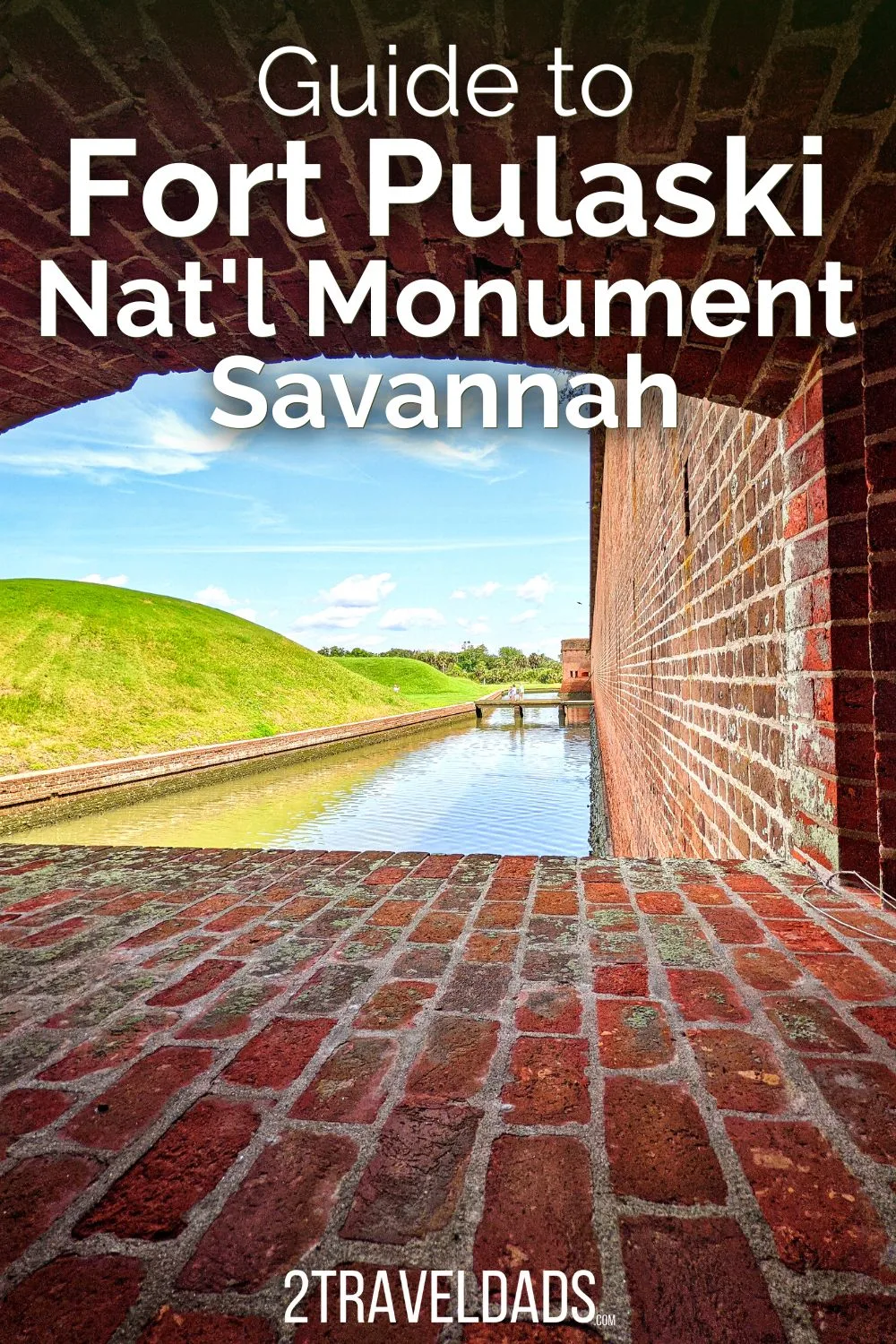I love spending the day at Fort Pulaski National Monument. Our kids always have a great time and when people visit us in Savannah, it’s always on our history itinerary of Georgia. Fort Pulaski offers a wide array of activities for history buffs, nature enthusiasts, and adventure seekers alike.
Whether you’re looking to explore the history of the Civil War era or take a stroll through the park’s coastal scenery, Fort Pulaski has something for everyone. Join us as we dive into the top things to do at Fort Pulaski, from touring the fort’s fascinating exhibits to hiking the trails and watching wildlife in their natural habitat. So, pack a picnic, grab your camera, and let’s discover Fort Pulaski together!
If you have any questions about things to do at Fort Pulaski or have additional suggestions, please leave a comment or send us a note. We’re always happy to share more!
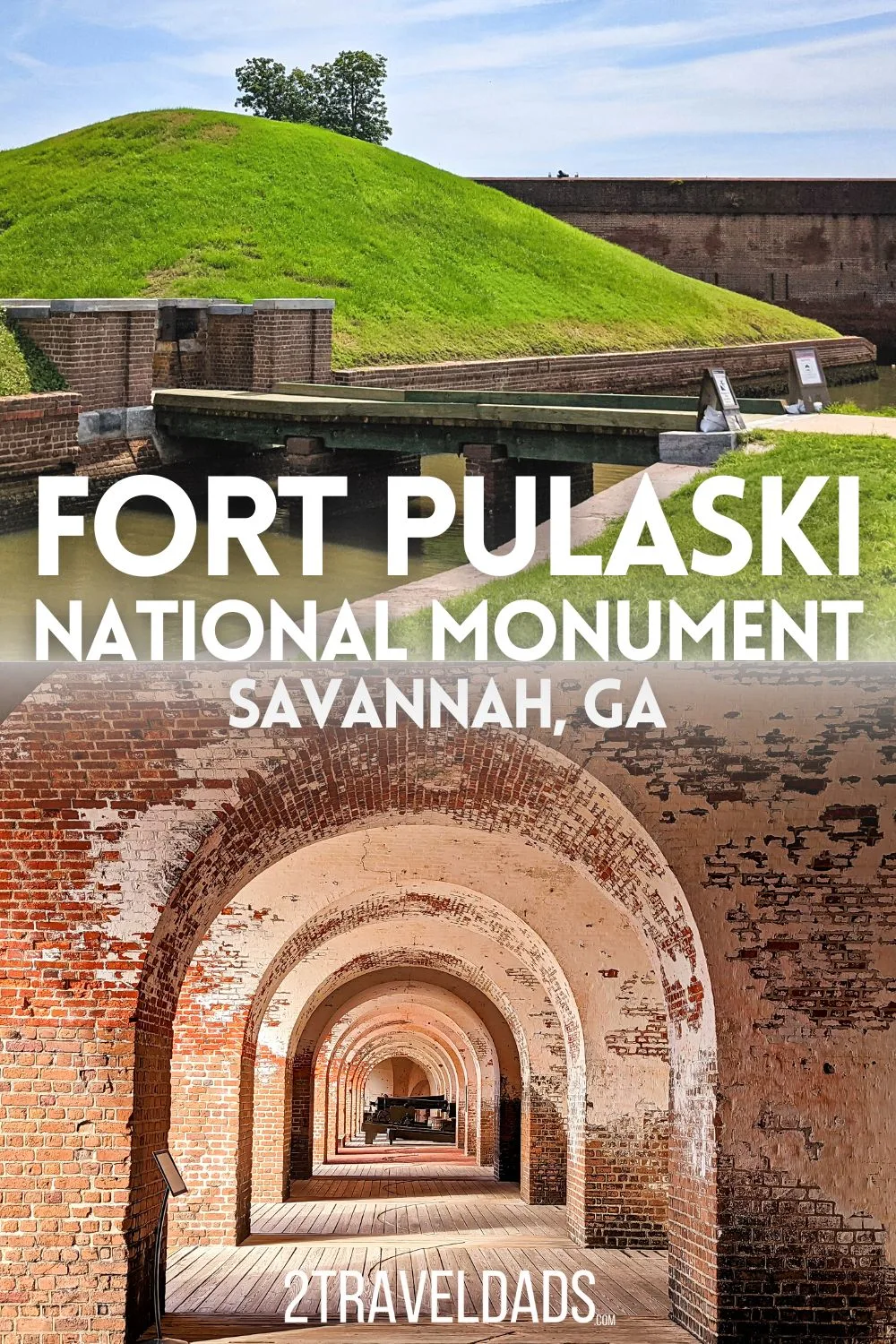
Where is Fort Pulaski National Monument?
Fort Pulaski National Monument is located on Cockspur Island, a small barrier island situated near the mouth of the Savannah River in Chatham County, Georgia. This is the northernmost point of Coastal Georgia.
The fort is about 15 miles east of Savannah, and it is easily accessible by car or bike, but not directly via public transportation. If you don’t have a car, you can get an Uber or take the Chatham Area Transit number 10 bus to Wilmington Island and then walk the five miles to the fort… or just take an Uber from Savannah and you’ll save a ton of time.
Visitors with cars can reach the fort by taking US Highway 80 East from Savannah and then following the signs to the park entrance. It’s an easy drive across the barrier islands and tidal rivers.
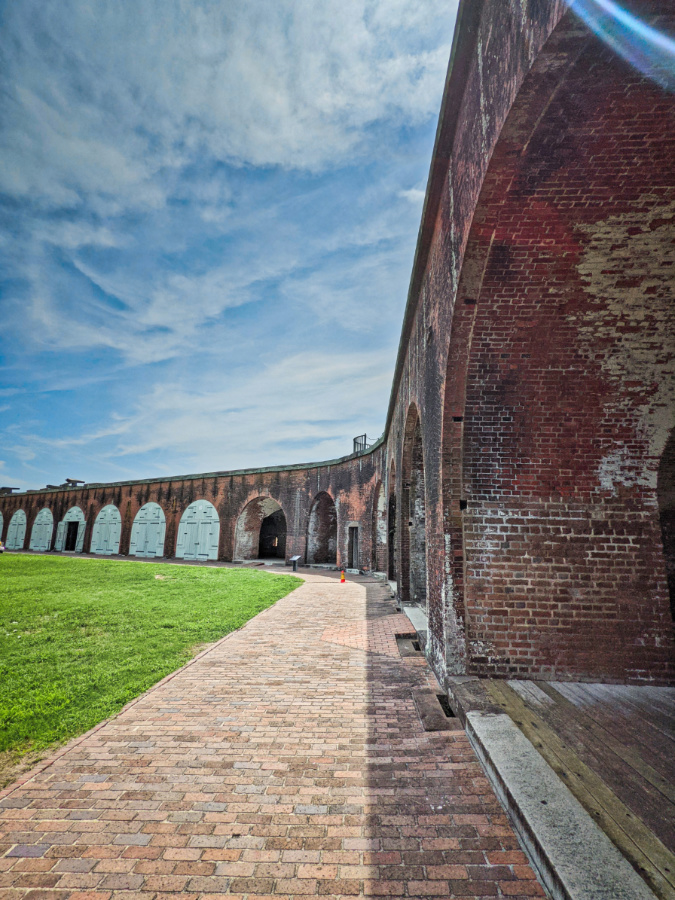
Admission and Hours of Fort Pulaski
Fort Pulaski National Monument is open every day of the year except for Thanksgiving Day and Christmas Day. The park opens at 9:00 AM and closes at 5:00 PM. The fort itself is open to visitors from 9:00 AM to 4:30 PM, as the rangers need to sweep the fort and make sure nobody is hiding anywhere or fell asleep on a bench or something.
Remember, hours of operation may vary during holidays or special events, so it’s a good idea to check the official park website or call ahead before your visit to confirm the opening hours. Also, there may be times when not every part of the park is open, including the trail to the Cockspur Island Lighthouse viewpoint, because if there’s a king tide or a bad storm the trail can flood.
The entrance fee for Fort Pulaski National Monument is $10 per person for visitors 16 and older. Children under 16 years old are free. There are also several fee-free days throughout the year, including National Park Week in April, National Public Lands Day in September, and Veterans Day in November.
If you have a National Parks Pass (we do and LOVE it!) you’ll have entry taken care of for those in your vehicle, assuming you’re not driving a 16 passenger van… And if you’re doing a Coastal Georgia road trip, you can continue onto Florida and use your pass again at the Castillo de San Marcos National Monument in St Augustine. And then Biscayne NP and the Everglades…
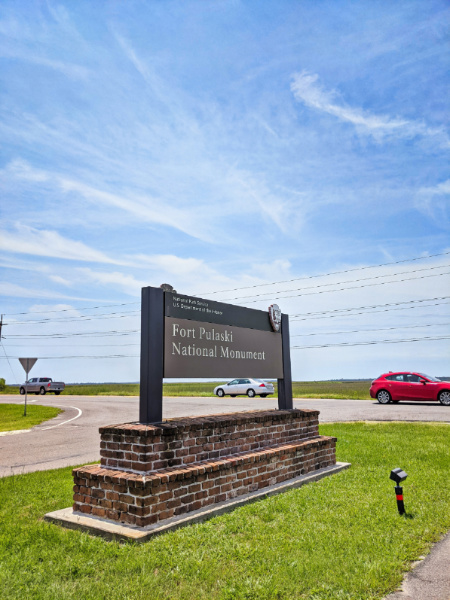
10 Things to Do at Fort Pulaski National Monument
So what can you do when you’re actually at the fort. We visit often, so these are our top picks for things to do at Fort Pulaski National Monument. Remember before you plan any of these to consider the weather, because even though the fort is on the river at the coast, it can get HOT and you’ll tire out if you’re not used to it.
Tour Fort Pulaski
This is the reason you’re here most likely. Visitors can explore the brick fort, built in the mid-1800s, and learn about its role in the Civil War. There are exhibits throughout the whole fort, so whether you’re interested in learning about cannons, military strategy, the Underground Railroad or life for soldiers at Fort Pulaski, there’s a topic to keep you interested.
Allow yourself 90 minutes to tour the fort. If you’re a fast reader or have kids, time withing Fort Pulaski’s walls may be better at around 60 minutes.
Tip: don’t miss the earthen tunnels and rooms on the west side of the fort. Between the two drawbridges there is actually a network of tunnels and a totally different view of Fort Pulaski.
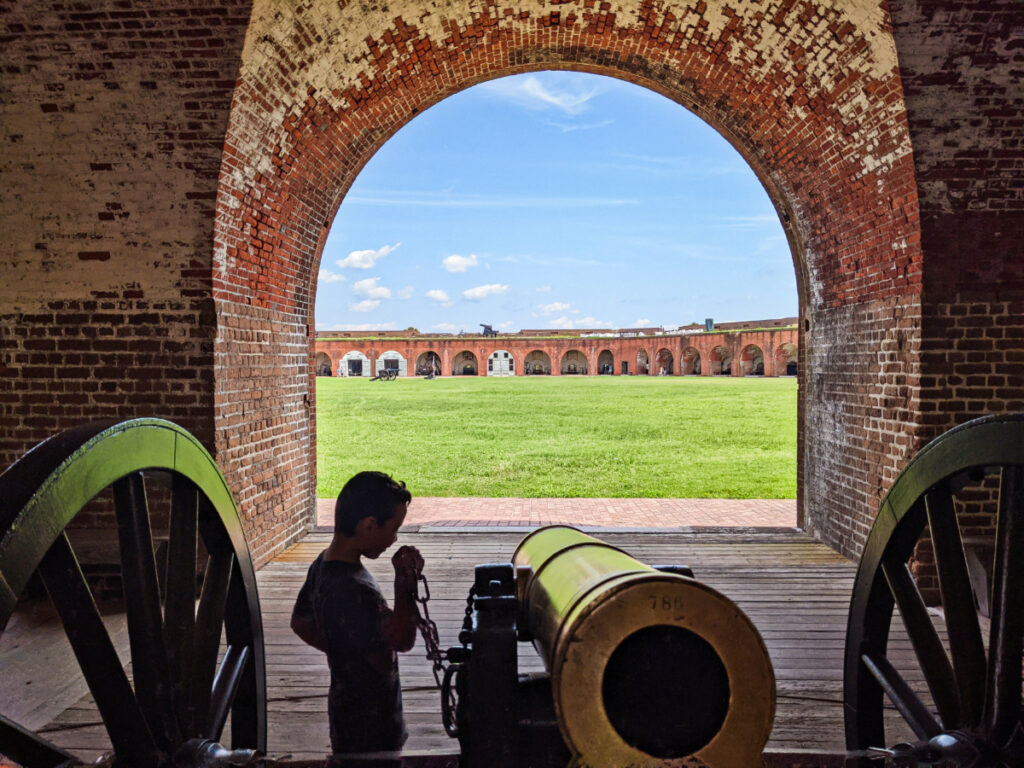
Civil War History at the Visitors Center
You don’t have to stop into the visitors center when you visit Fort Pulaski, but I think it’s a great idea. You can get your National Park Passport stamp, find out about what’s going on inside the fort while you’re there, and get more in-depth information about the fort’s history than you’ll find when you’re touring. I think this is also a great place for kids to learn a little context of what Fort Pulaski is and why it’s important.
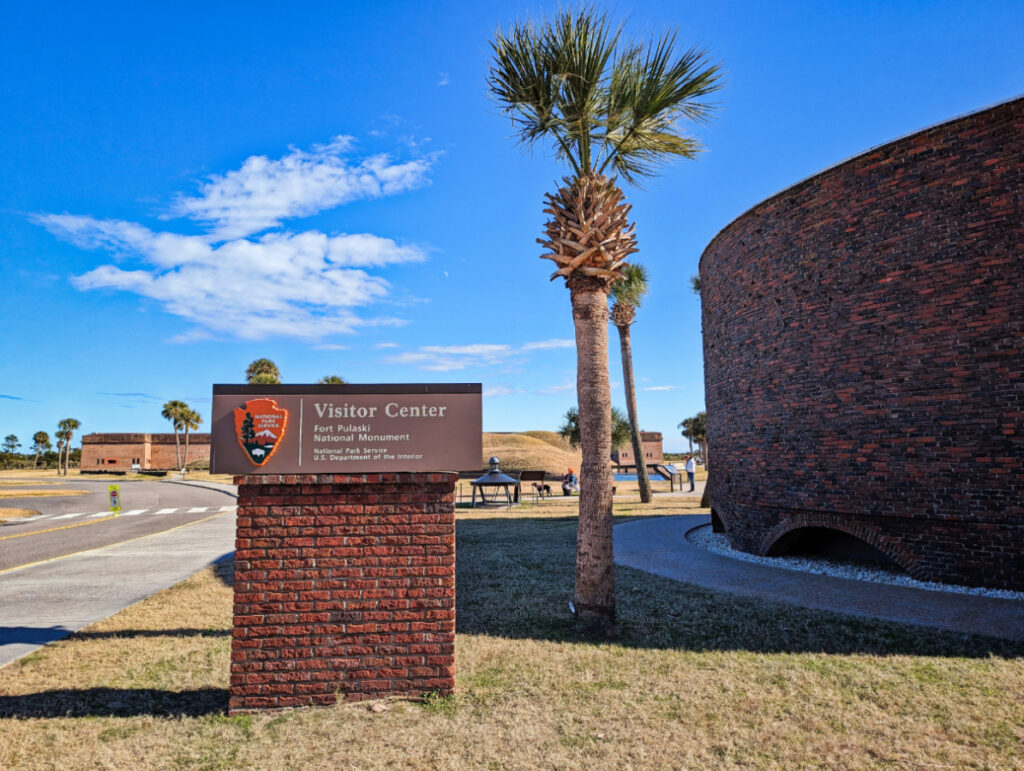
Hiking around Fort Pulaski National Monument
The park has several hiking trails, ranging from easy walks to more length hikes, going between historic sites and natural landscapes. From the visitors center parking lot you’ll be able to hike all of Cockspur Island and the National Park area where the land is solid (and unrestricted). Walking the north trail will take you to the old docks and more modern fortified areas (bunkers). Heading south, you can circumnavigate Fort Pulaski and see the Civil War scars.
My favorite trail at Fort Pulaski National Monument is the trail to the east that heads to the Cockspur Island Lighthouse. While you cannot go into the lighthouse, you can explore the low coastal woods and marshlands on your way to the viewpoint. If tides and the National Park Service allows, continue on the tidal trail out to the sandbar / oyster beds surrounding the lighthouse. It’s beautiful!
Tip: keep your eyes peeled for the different trail signs. Sometimes they are easy to miss, especially if the plants around them have gotten a bit overgrown.
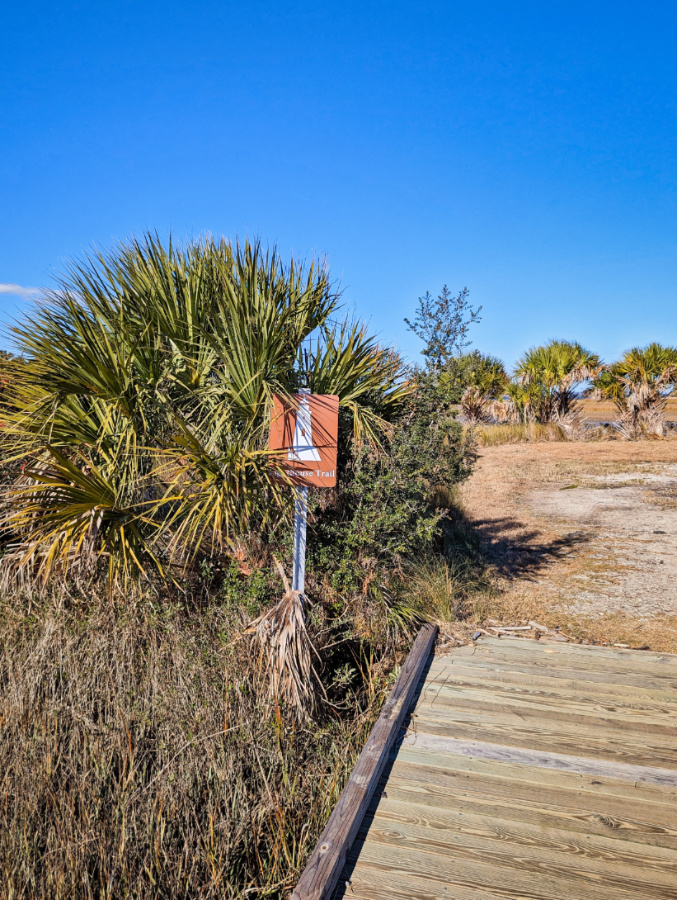
Wildlife and Bird Watching at the Fort
I’m such a sucker for bird watching. Visitors can observe a variety of wildlife, including alligators, birds, and other animals that inhabit the park’s marshes, forests, and beaches. With over 300 species of birds that can be seen in the area, Fort Pulaski is a birdwatcher’s paradise.
For the best bird watching experiences, perch yourself atop the fort looking to the south or do the trail to the Cockspur Island Light viewpoint. Bring a telephoto or binoculars!
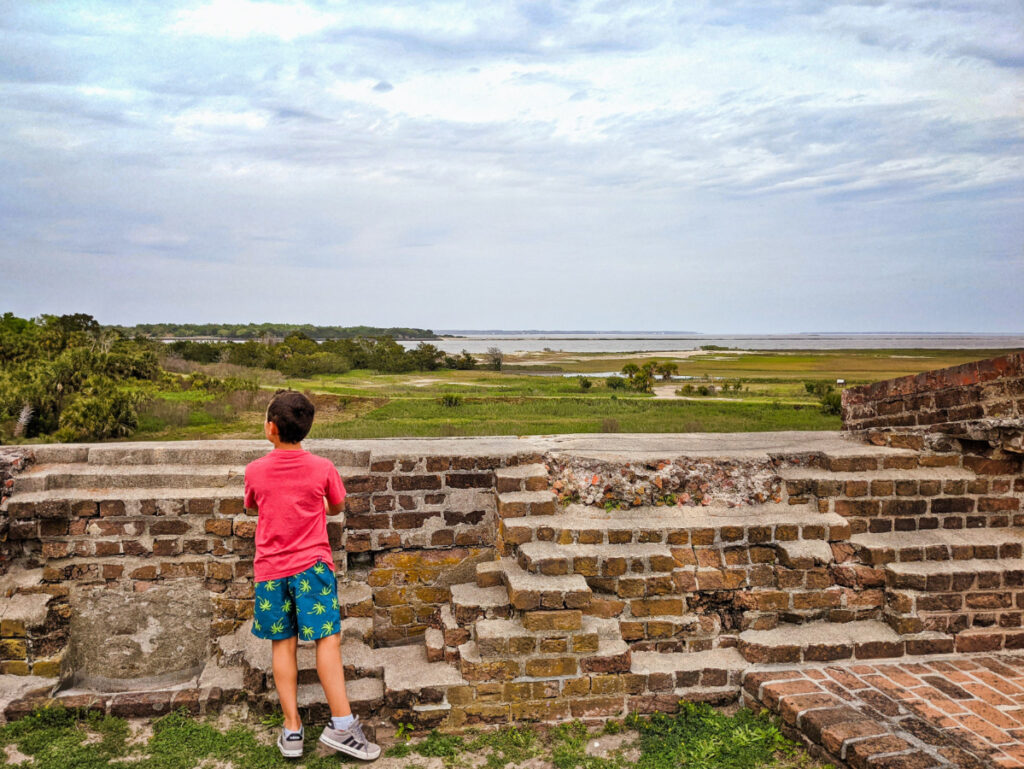
Explore Fort Pulaski as a Photographer
I know that may sound odd, but here’s what I mean: Fort Pulaski National Monument is very unique with so much contrast in shapes, colors and textures. Photographing Fort Pulaski in different lights is one of my favorite things to do in Savannah. The archways of the internal structure are fascinating, and the peeps of light through tiny windows make for really cool photo subjects.
When you explore Fort Pulaski National Monument with an eye to see interesting details you’ll actually find stories playing out. Between the holes in the walls from cannon fire to the messages scratched into the bricks, you’ll see what I mean.
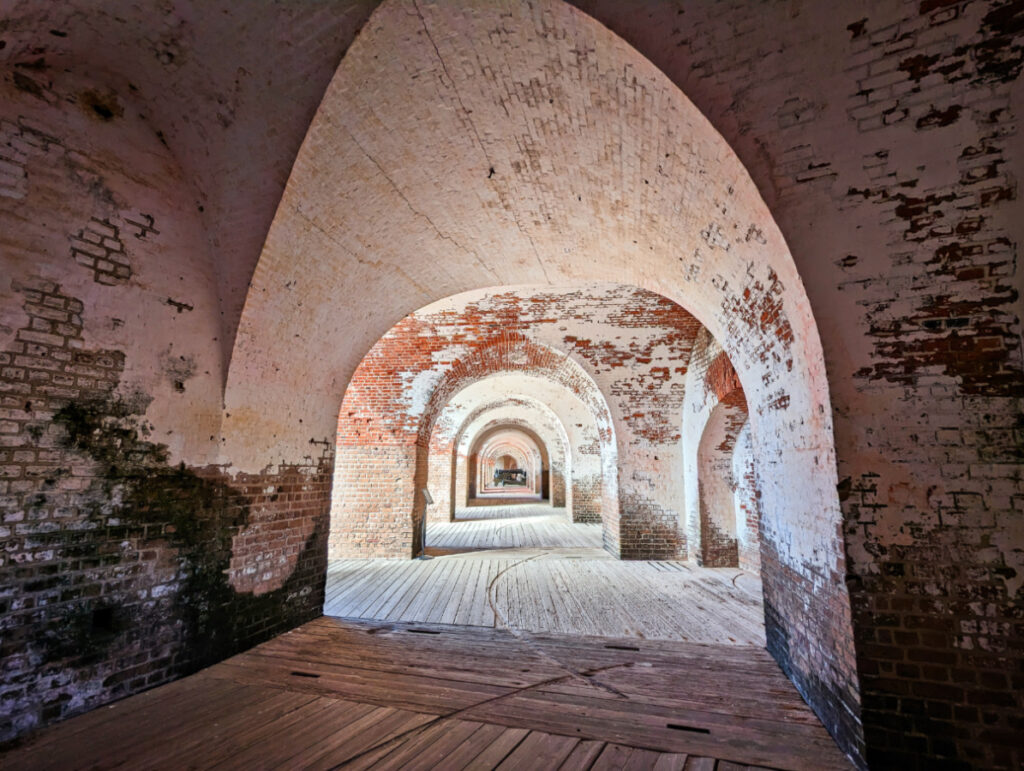
Kayaking at Fort Pulaski National Monument
If you’re planning on kayaking at Fort Pulaski National Monument, you don’t head into the park via the main gate. This is one of the coolest places to kayak in Coastal Georgia, but you have to know where to go!
While you can’t go kayaking in the moat around Fort Pulaski, you can put it at nearby Lazaretto Creek to paddle around the National Park area. One of the more unique spots for kayaking on the Georgia Coast, paddling at Fort Pulaski National Monument includes creeks, tidal rivers and even a lighthouse.
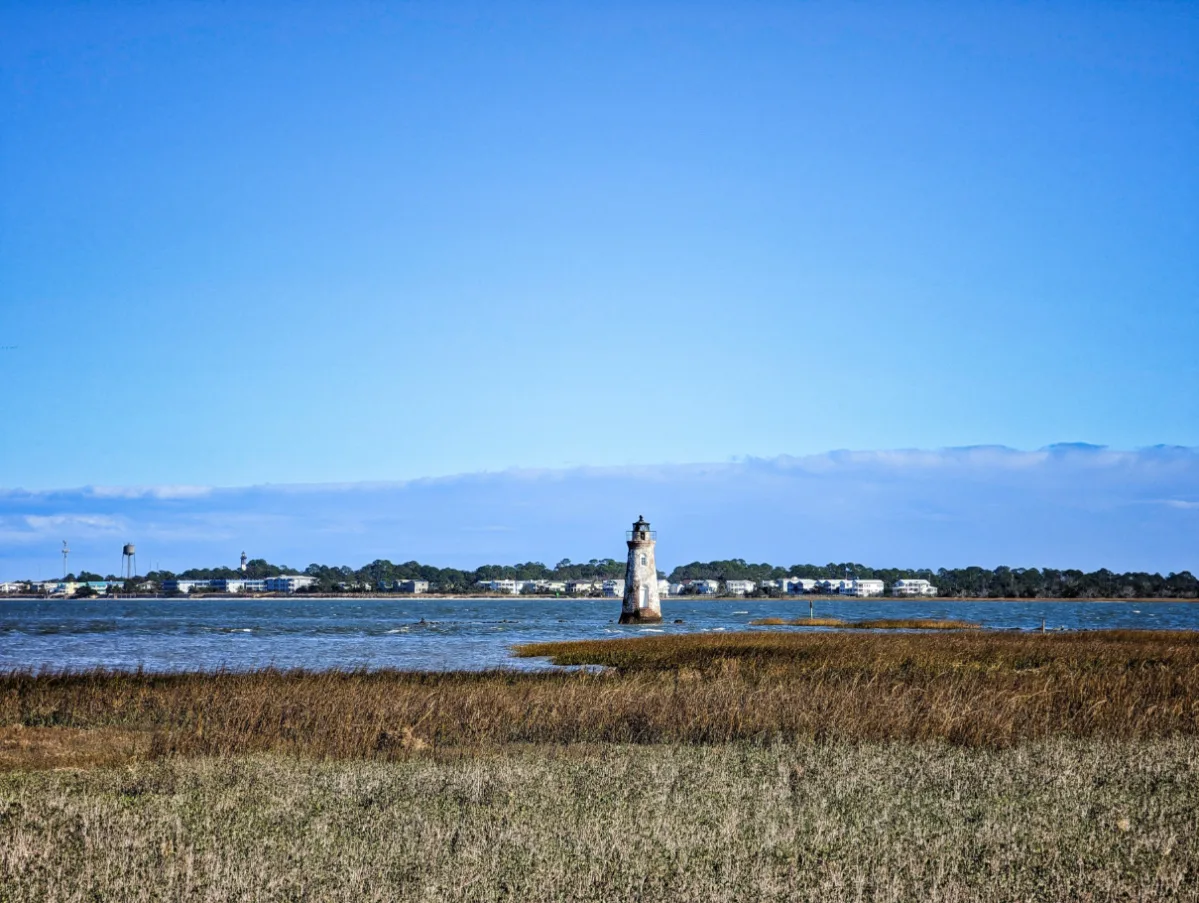
Complete the full paddle around Cockspur Island and cross the state line in the river over to South Carolina if you like. Be mindful of the tide and remember: the Savannah River is a major shipping channel, so watch for container ship wakes. Launch from Lazaretto Creek Boat Ramp.
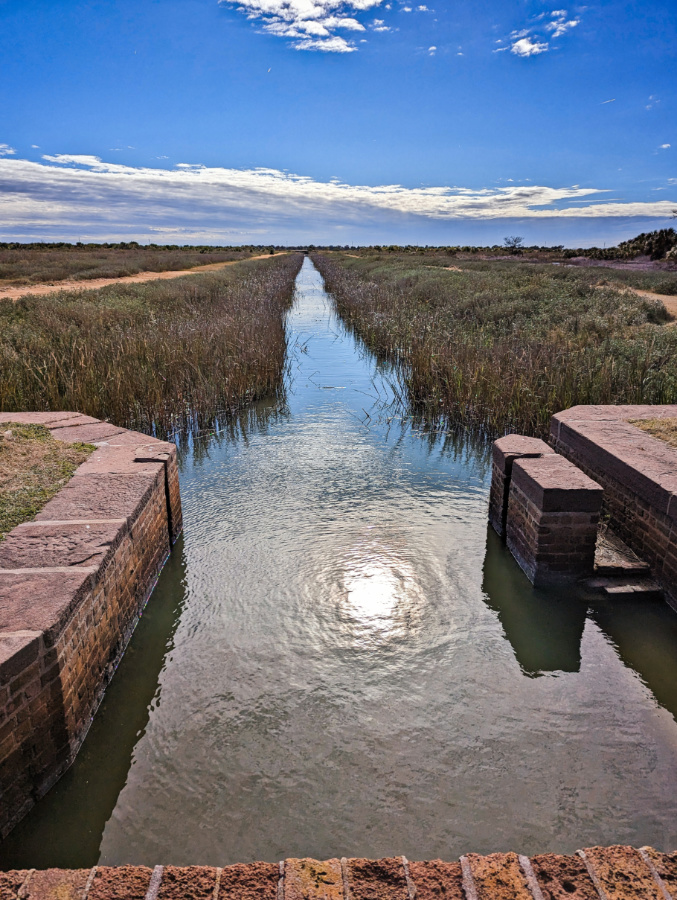
Complete the Fort Pulaski Junior Ranger Packet
It’s funny, because there are National Park sites we visit where our kids are NOT interested in doing the Junior Ranger packet at all, but here at Fort Pulaski National Monument they were on it! Get your Junior Ranger packet from the visitors center and review it before you leave to tour the fort, as there are probably activities to do or answers to find there in the visitor center.
As you’re completing your Junior Ranger pages, you can always ask a docent or Park Ranger for help if you’re stumped. And then don’t forget to turn your completed packet in before you leave so you can get a Junior Ranger badge.
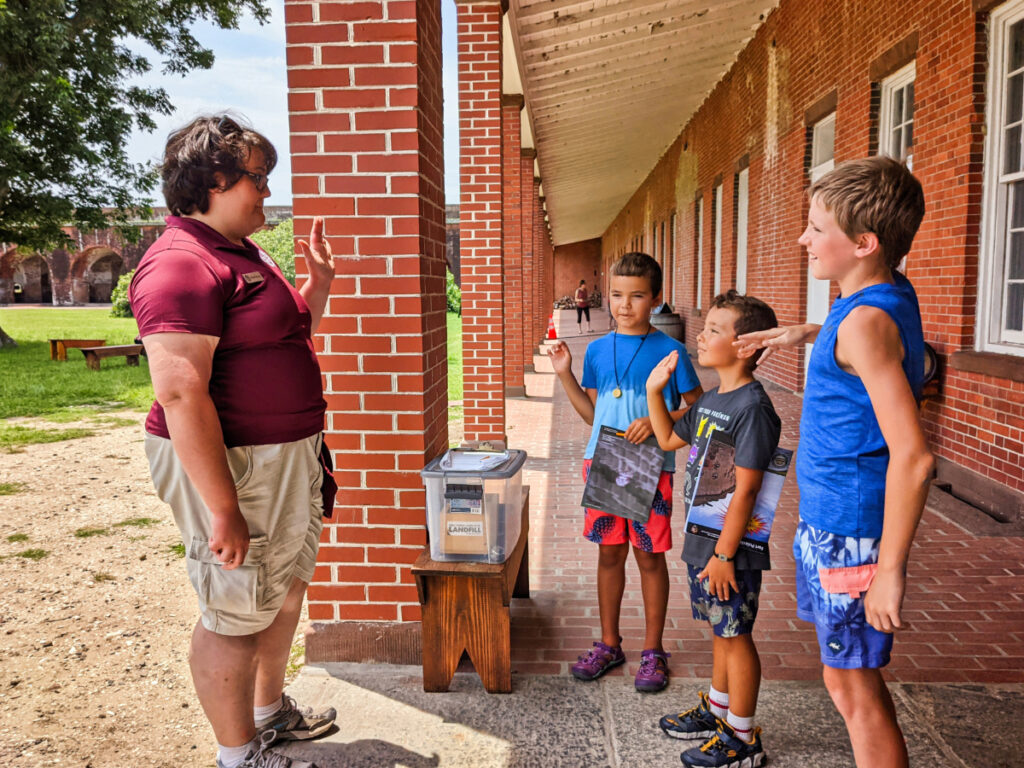
Picnicking at the Fort
The park has several picnic areas where visitors can relax and enjoy a meal surrounded by nature. My favorite spot to have a picnic is actually not at one of the picnic tables, but in one of the many grassy spots. There is a wonderful area in the sun by the primary picnic area where you can setup for lunch.
If you choose to hit the trails and picnic out and about, be sure that you return with any trash you create. There are not trash bins everywhere, and you CANNOT LITTER.
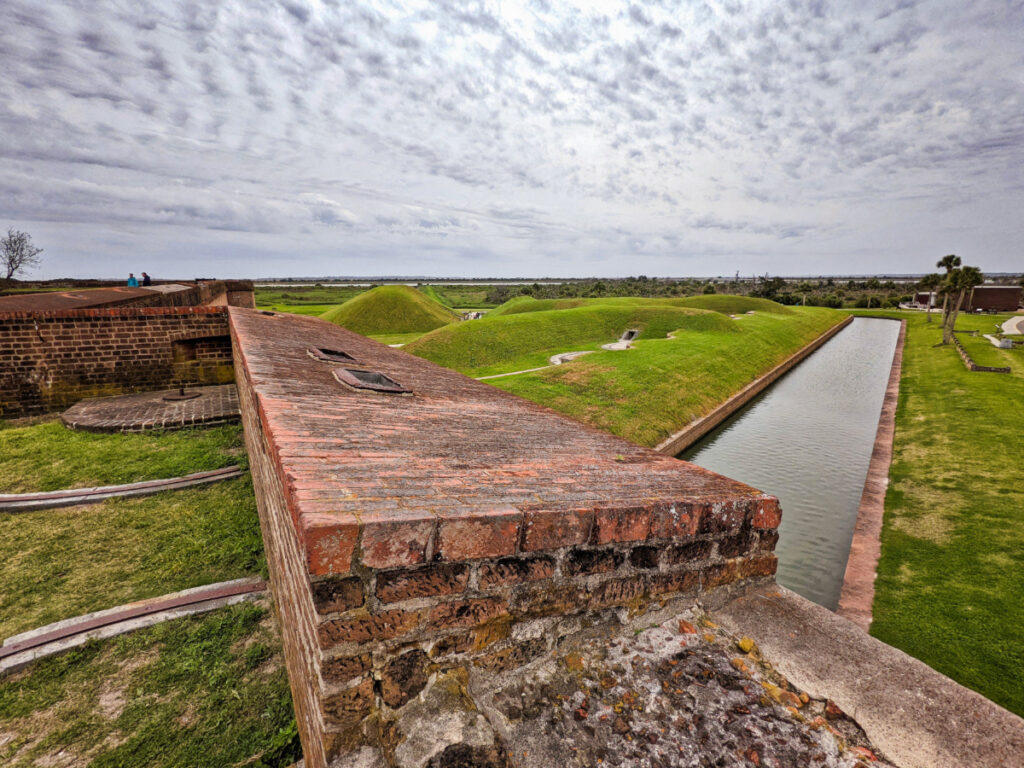
Attend Special Events by the National Park Service
It’s not everyday, but throughout the year the park hosts several special events, including reenactments, concerts, and festivals that celebrate the area’s history. Old Fort Jackson Historic Park, which is between Fort Pulaski and Savannah, has more events than the National Park Service puts on, as they do cannon fire and living history every day. When you’re planning your visit to Fort Pulaski though, check their calendar to see if there’s something interesting happening.
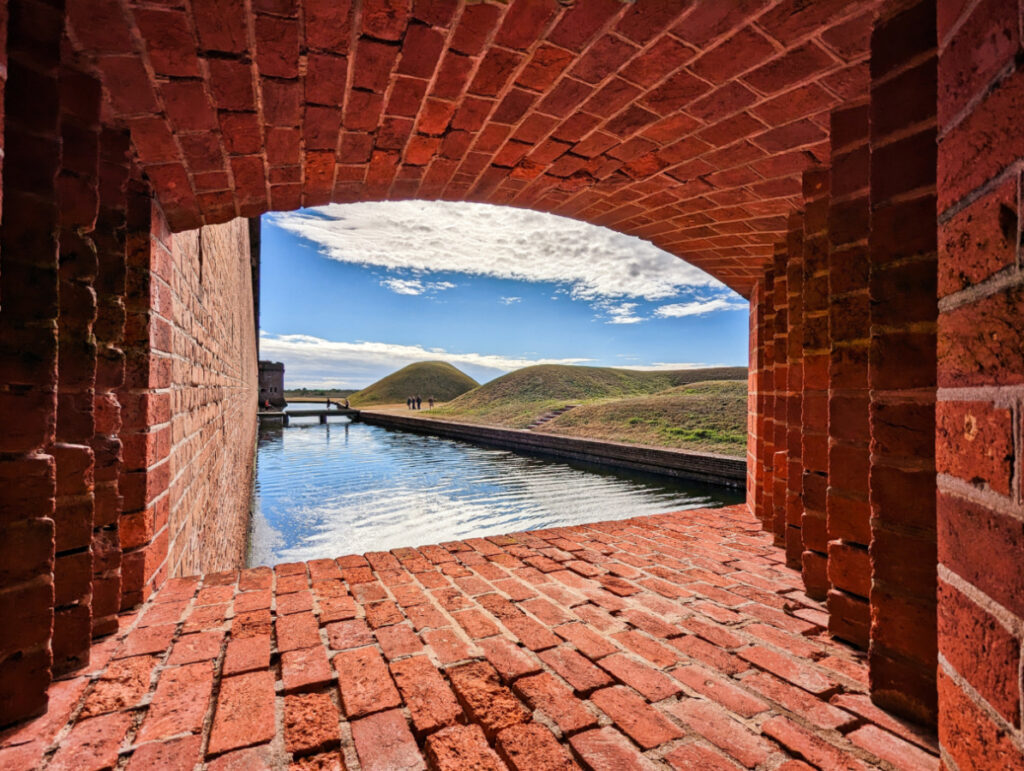
Explore Nearby Tybee Island
Tybee Island is a fun place to visit (one of the best weekend getaways in Georgia), and if you’re already out at Fort Pulaski you might as well continue onto the island. You’ll find the Tybee Island Lighthouse, a fort, the Marine Science Center, lots of good dining and beautiful beaches. For a fun day trip plan, visit Fort Pulaski National Monument in the morning and then head to Tybee for lunch at the Crab Shack (it’s fun and totally unique). Then pop over for some beach time or tour the lighthouse, then head back to Fort Pulaski to see it in a different light. You’ll love each visit, and you’ll see that each is a very different experience.

Frequently Asked Questions about Fort Pulaski
Yes, some of these questions are better answered in person when you visit Fort Pulaski, but I think it’s good to get some context and your travel planning questions answered before you get there.
Is there beach access at Fort Pulaski National Monument?
While you can walk to the beach areas of Fort Pulaski, you cannot swim or walk on the beach. It is protected both for nature and historic structures.
What is the history of Fort Pulaski?
Fort Pulaski was constructed between 1829 and 1847. The construction of the fort was commissioned by the US government to protect the important port city of Savannah, Georgia, and the Savannah River from foreign invasion. The fort was named after Count Kazimierz Pulaski, a Polish hero of the American Revolutionary War. However, during the American Civil War, the fort became the site of a famous battle when it was bombarded by Union troops in 1862, resulting in significant damage to the fort’s walls and ultimately leading to its surrender.
When is the best time of day to visit Fort Pulaski?
I think visiting Fort Pulaski in the morning and then in the late afternoon are the best times, as the light isn’t directly from above. Also, mid day is when it is hottest at the fort.
When is the best time of year to visit Fort Pulaski?
Visiting Fort Pulaski National Monument in winter is ideal as there are fewer people and the weather changes quickly, keeping things interesting. It can be cold and windy though, so dress appropriately. If you’re visiting in summer, bring plenty of water and sunblock.
What is the admission fee for Fort Pulaski, and what are the park hours?
The entrance fee for Fort Pulaski National Monument is $10 per person for visitors 16 and older. Children under 16 years old are free. There are also several fee-free days throughout the year, including National Park Week in April, National Public Lands Day in September, and Veterans Day in November. It’s open from 9:00 am to 5:00 pm daily.
Can I bring my pet to Fort Pulaski?
Yes! Pets must stay on a leash of no more than 6 feet and you must clean up after them. They are not allowed in the visitors center, but they can go in the fort and on the trails.
What activities can I do at Fort Pulaski?
Fort Pulaski is great for walking, learning about Civil War history, bird watching and adding some education to your trip to Savannah.
Are there any guided tours available at Fort Pulaski?
Yes! Park Rangers lead tours throughout the day, multiple times on the weekends. There are no authorized vendors for tours from non-National Park staff at this time. Tours may take you around Savannah and out to Fort Pulaski, but there are none specifically recommended by the National Park Service.
Is Fort Pulaski accessible to people with disabilities?
Yes, but not all of the fort. Persons with wheelchairs and walking assistance can access the Visitors Center and the main level inside Fort Pulaski. The upper level and some of the trails are not accessible.
What is the weather like at Fort Pulaski, and what should I wear?
Always expect a little heavy rain when you come to Savannah. In the summer it is hot and humid, and in the winter it’s usually pretty nice, but it can get cold. Dress in layers and bring an umbrella for rain or really sunny days.
Are there any restaurants or cafes at Fort Pulaski?
No, there aren’t. You can bring a picnic though. Tybee Island and Savannah are both LOADED with places to eat, so you can easily visit the fort and then head either direction to find food.
Can I camp or stay overnight at Fort Pulaski?
No, there are no overnight accommodations and there is no campground at Fort Pulaski National Monument. Plan to stay in Savannah’s Historic District for an overnight nearby.
I hope you’re excited to visit Fort Pulaski National Monument. It’s one of the best things to do when you come to Savannah, and it’s a really wonderful National Park site.
f you have any questions or additional thoughts, please feel free to leave a comment or send us a note. We’re always happy to share more and help you plan travel!
